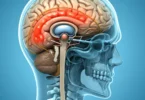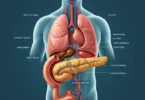Lipatrophischer Diabetes (Acquired Generalized Lipodystrophy)
The Acquired generalized lipodystrophy, are also known as Lawrence syndrome or Lipatrophischer diabetes , belongs to a group Type 3 Diabetes.. It is characterized by insulin resistance with increased cardiovascular risks. In Lipatrophischer diabetes (Lawrence syndrome) is a selective loss of subcutaneous fat in the face, Amen, legs, palms and sometimes soles.
Causes And Symptoms of Libatrophischer Diabetes
More than 100 cases have been reported. The sex ratio is w: m = 3: 1. The clinical phenotype similar to that of Berardinelli-Seip syndrome, but the lipoatrophy appears secondarily in children, adolescents or adults, therefore the syndrome is considered to be acquired. In some cases the Fettgewebsverlust circumscribed, especially when a panniculitis preceded. The syndrome is associated with cravings and accelerated growth in adolescence. One third of patients has acanthosis nigricans and polycystic ovarian disease. There is often a hepatomegaly with steatosis, which progresses to cirrhosis not infrequently. Laboratory findings include hyperinsulinemia and insulin resistant diabetes, often associated with severe hyper-triglyzeridämie and low plasma levels of leptin and adiponectin. Recently, it was reported proteinuria with focal segmental glomerulosclerosis or with membranoproliferative glomerulonephritis are disturbed regulation of the growth hormone.
Types Of Libatrophischer Diabetes
Three forms of the disease have been described
- Panniculitis (inflammatory nodules followed by lipoatrophy)
- Autoimmune form that is often associated with other diseases, such as chronic active hepatitis, Hashimoto’s struma and hemolytic anemia, but also with dermatomyositis and Sjogren’s syndrome
- Idiopathic: The cause of the disease is not known. The substance may cause infection as a trigger (a panniculitis-form occurred after tuberculosis) or autoimmune mechanisms.
Recently (C4) has been reported in cases of Lipatrophischer diabetes (Lawrence syndrome) via activation of the classical complement. In contrast, partial lipodystrophy in which the upper half of the body is affected, characterized by activation of the alternative complement (C3 low). In these patients, the anti-p155 antibodies is often detectable. Furthermore, the causal involvement of a genetic factor is also assumed.
Diagnosis And Treatments of Libatrophischer Diabetes
The Acquired generalized lipodystrophy (Lawrence Syndrome) is a clinical diagnosis through assessment of body fat, especially by biphotonischer absorptiometry and magnetic resonance. Differential diagnoses include other forms of extreme insulin resistance (Rabson-Mendenhall syndrome, .. Leprechaunism, Berardinelli type lipodystrophy and insulin resistance syndrome type A and B)and other lipodystrophies. The metabolic symptoms are primarily treated differently from other forms of insulin resistance by
- Physical activity,
- Insulin sensitizers (eg, metformin or pioglitazone),
- Insulin (or preferably insulin analogues),
- Antihypertensives,
- Monitoring and treatment of hypertriglyceridemia.
- Recombinant human leptin has been proved effective. However, this therapy is not available in all countries. In severe autoimmune forms immunosuppressants may be use.






